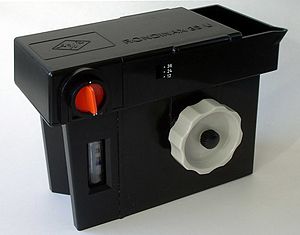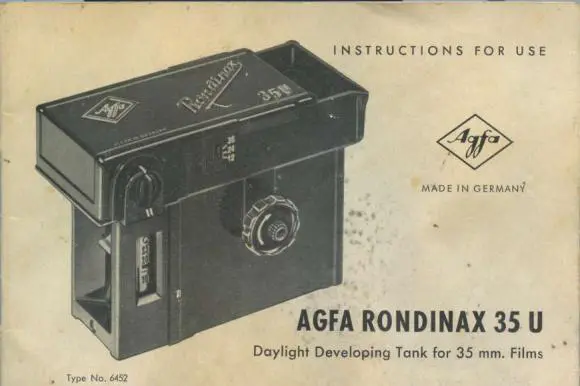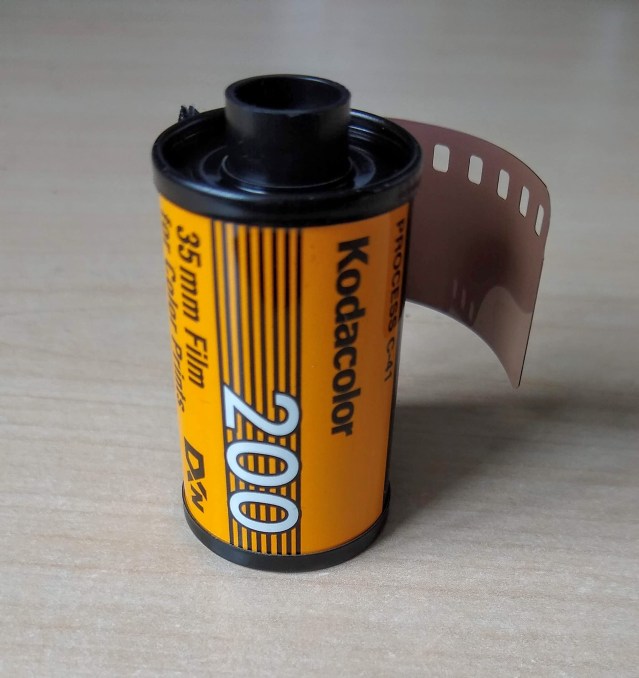Daylight film developing with a vintage Agfa Rondinax 35u
In this post I talk about my experiences of developing film in an Agfa Rondinax 35u Daylight developing Tank – sometimes also known as the Agfa Rodinax.
In this post, I talk about my experiences of developing film in a vintage Agfa Rondinax 35u Daylight developing Tank – sometimes also known as the Agfa Rodinax.

I bought this Agfa Rondinax 35u tank a few months ago on eBay UK, but hadn’t until now got round to trying it out. It is a tank which doesn’t require the film to be loaded in darkness, because the film canister is placed into the tank and the film wound onto the development spiral with the lid in place.
Using the tank was remarkably easy – in fact the hardest part of the whole process was extracting the film leader from the film canister, so I could use the tank. Because the film is wound onto the spiral without removing the film from the canister, the leader needs to be available to fix onto the clamp which pulls the film in.
Unfortunately, the camera I used to expose the film (a Pentax SFXn SLR) had fully rewound the film into the canister, so I had to try to extract it. I followed several methods I found on YouTube involving pieces of card pushed into the light trap, but I couldn’t get any to work.
In the end, I found a simple way to do it. I took a strip of card about the same width as the canister and fixed a small strip of double-sided sticky tape to the left edge of it. I pushed this into the light trap and then wound the film until the card started to be drawn into the canister. At this point, pulling the card out also extracted the film leader. Once the film was available, the rest of the developing process was simple.
As a prelude to carrying out the development process, I had to get the tank and chemicals up to the correct temperature of 68 C which I did by standing the tank in water of the correct temp and then drying it out prior to use.
The canister is fitted to the tank in daylight and a small clamp fitted to the centre of the exposed film. There is a large knob on the side of the tank which is used to start to wind the film onto the spiral. Once the film has been wound a small amount, just enough to make sure it engages with the spiral, the lid is placed on the tank and the rest of the film can be wound on. An indicator on the side of the tank shows the number of exposures which have been transferred from the canister to the spiral, but at the end of the film there is considerable resistance felt, so it’s fairly obvious when the film is in place. At this point the film is cut using an integral film cutter and the knob is then free to turn.
Turning the knob is an important part of the process, because the tank is filled with just enough developer to come halfway up the spiral internally, and so the knob needs to be continuously moved to make sure the development is uniform. Using the developer I had (Ilford Ilfosol 3 at 14+1) meant I needed to do this for 7:30 min to complete the process, but this is actually easier to do than using my normal tank which uses an inversion technique because you just set a timer and carry on turning the knob once every couple of seconds.
Once the development was complete, I poured out the developer and washed the film a few times and then repeated the process with fixer. After fixing the film was washed in the tank for a few minutes and then the lid can be removed and spiral removed from the tank and left in running water for 20 minutes.
Results with the Agfa Rondinax 35u.
Unfortunately my first results were not very successful. The film is either very under exposed or underdeveloped. There are some images on the film, which I will try to scan once the film is dry, but I would suspect that the problem is with the camera rather than the development. If I can get usable images from the film I will post them to my Pentax SFXn post.
For anyone who would find it useful I’ve included here the manual for the Rondinax tank.
Discover more from Everything Vintage
Subscribe to get the latest posts sent to your email.



